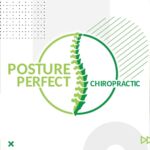Chiropractor for Posture: Boosting Athleticism Through Better Breathing
Sports are inherent among countless Filipinos. In fact, it is safe to say that the profound devotion of many to sports instill values that are imperative to those who want to push themselves to the limit and go beyond it. Putting the said factors into consideration, you do not have to wonder why a significant number of Filipinos want to improve their athletic prowess.
That being said, do you know that regardless of whether you are a professional athlete or a weekend warrior, you can significantly improve your athleticism and physical fitness by having regular chiropractor for posture treatments? How is this possible? Well, by improving posture and, in the process, enhancing breathing.
The importance of breathing in athletic performance

Nowadays, many athletes are so focused on building strength, mobility, and the like. Consequently, they tend to neglect another important aspect of athletic performance: breathing. It should be noted that if done at an optimum level, it can reduce stress as well as fatigue and, at the same time, boost endurance and stamina. It can also instill a sense of calmness, sharpen focus, and so on.
Simply put, proper breathing can positively impact one’s physiological as well as psychological state and, therefore, allow him or her to perform better in sports activities. Let us delve into the details so that we can further appreciate its importance in athletic performance. Along the way, let us examine the role of a chiropractor for posture with regard to taking it to a different level and improving overall health.
-
Shortness of breath
According to a study that was performed by Dr. Mitch Lomax and her team at the University of Portsmouth (Department of Sport and Exercise Science), robust inspiratory muscles (responsible for breathing in) can play key roles in significantly boosting athletic performance.
It added that the body is specifically designed in such a way that the muscles that are responsible for breathing prioritize the delivery of oxygenated blood in the limb region. Putting this factor into consideration, the rest of the body–including the arms and legs–are the first to experience premature fatigue during physical activity.
In certain athletic activities, some may experience shortness of breath during training or actual competition. It is quite common even among seasoned athletes, and if not immediately addressed, it may lead to fatigue, underperformance, and the like.
Bear in mind that shortness of breath can be caused by a wide array of factors, and some of the most notable ones are aerobic fitness, airway dysfunctions, poor posture, and so forth.
With regard to poor posture, those who are in a hunchback position for extended periods may also encounter shortness of breath to some extent. This is due to the fact that it can lead to excess pressure in the spine, lungs, and diaphragm.
-
Dysfunctional breathing patterns
Dysfunctional breathing patterns are linked to a high risk of musculoskeletal conditions that often results in poor physical performance. This is according to a study (published in the Journal of Strength and Conditioning Research) that was conducted by a team of researchers that was led by Dr. Ryoko S. Terada.
It examined the prevalence of diaphragmatic breathing (breathing in via the nose and out the mouth) as well as dysfunctional breathing patterns among athletes. This, in an effort to determine the biomechanical dimensions of the mentioned respiratory patterns.
Overall, the study suggests that breathing patterns can act as important indicators of a person’s health. That said, one who breathes with the use of primary respiratory muscles (diaphragm, lungs, etc.) produces a rhythmic observable movement of the lower rib, upper rib, and abdomen. Known as the diaphragmatic breathing pattern, it has been linked to enhanced performance, stress relief, and musculoskeletal injury reductions, among others.
On the contrary, individuals who have dysfunctional biomechanical breathing patterns are usually unable to contract their diaphragm to a desired extent. Because of this, they may rely on accessory respiratory muscles like the upper trapezius (shoulders), subclavius (shoulder girdle), etc., to breathe. In line with this, they may have elevated shoulders, expanded lateral rib cages, and reduced abdominal movements when breathing.
What does a chiropractor do to help improve breathing
-
Realign the bones and joints
When misaligned, bones and joints may hamper different body processes, which include breathing. Also, it is important to note that the more severe the misalignment, the more likely it is for various functions to be disrupted, particularly nerve function. This is because the nerves in the body send messages from the brain to the lungs and the diaphragm. Due to bone and joint misalignment, hormones and body chemicals that may put off the communication process may be released.
When this happens, the lungs and diaphragm may not receive essential messages and, therefore, may not be able to adapt and boost their air intake. Consequently, this may affect the quality of breathing–factors–that may contribute to poor athletic performance.
Adjustments that are made by a chiropractor for posture can help improve breathing. How? By taking inappropriate amounts of pressure off the nerves as well as the muscles that control the lungs and diaphragm.
As straightforward as it may seem, it should be noted that cutting down tightness can make things easier for the respiratory muscles. This can pave the way for deeper and longer breaths: attributes that can contribute to enhanced athletic performance.
-
Thoracic spine adjustments
Thoracic spine (middle part of the back) adjustments that are performed by a chiropractor for posture have shown the potential to improve breathing.
A study that was published in the Journal of Manipulative and Physiological Therapeutics suggests that individuals who received chiropractic manual treatment and manual therapy that was followed by exercise experienced significant improvements in lung function. The long list includes measures such as forced expiratory volume and forced vital capacity. The former is the total amount of air that can be exhaled during an involuntary breath, while the latter is the maximum load of air that can be forcibly exhaled after a full inhale.
Another study from the Chiropractic Journal of Australia shows that chiropractic treatments, which consist of thoracic spine techniques, were associated with better chest expansion and healthier respiratory muscles.
The two studies signify that the said holistic approach can improve lung health and potentially athletic performance.
Summing up
If you are looking to improve athletic performance by means of optimum respiratory health, you should seriously consider getting regular treatment from a chiropractor for posture.
Remember, less-than-optimal breathing is a big no-no if you want to push yourself to the limit and be a step ahead of the competition. Whether you are an A1 athlete who is preparing for a make-or-break game or a fitness enthusiast who wants to make the most of your sets, it is safe to say that optimizing breathing is a game changer.
Book an appointment now. At Posture Perfect, we specialize in working with athletes who deal with posture problems, respiratory issues, and other concerns that prevent them from tapping their full potential. We also help ordinary individuals who simply want to improve their overall well-being through proper breathing. All these can be achieved at a reasonable chiro therapy price.
Contact us today to discuss the posture issues that you want to fix and the fitness level that you want to have. Our experts can create a personalized program for your specific needs and more.





